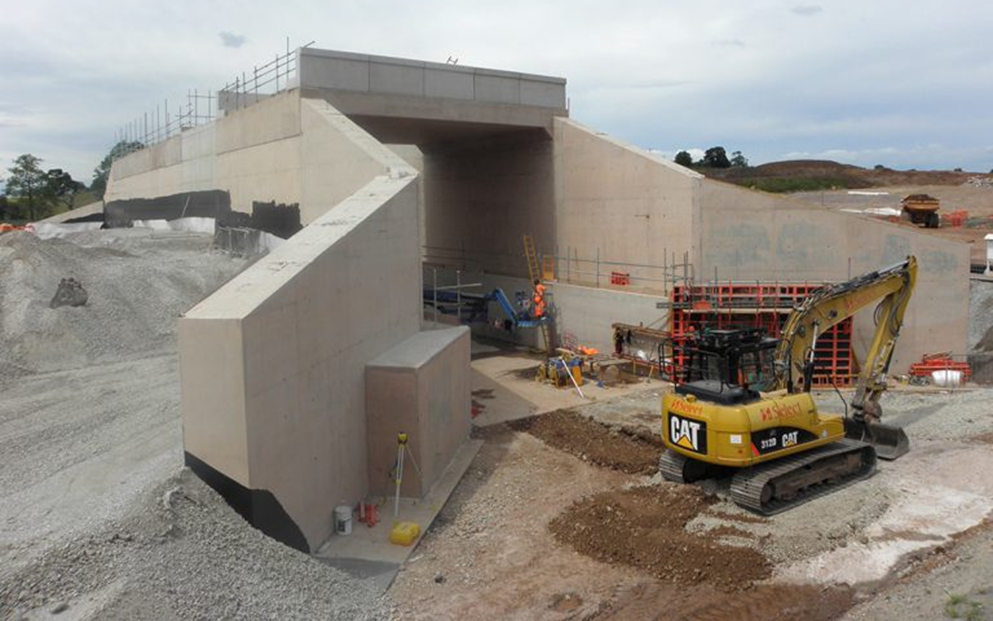Bridges are marvels of engineering that serve as critical components of transportation infrastructure, connecting communities and facilitating the smooth flow of people and goods. Among the various structural elements that contribute to the stability and functionality of bridges, wing walls play a crucial role. In this article, we explore the significance of wing walls in bridge design, their functions, and the aesthetic considerations that contribute to both form and function.
Understanding Wing Walls:
Wing walls are retaining walls that are typically constructed at the ends of bridge abutments. Abutments are the supports at the ends of a bridge that bear the load and provide stability. Wing walls extend outward from these abutments at an angle, resembling the wings of a bird, hence the name. Their primary purpose is to guide and direct the flow of earth or water around the bridge structure.
Functions of Wing Walls:
- Retaining Earth and Water: One of the primary functions of wing walls is to retain the earth or water on either side of the bridge. By preventing soil erosion and controlling the flow of water. Wing walls contribute to the overall stability of the bridge structure.
- Mitigating Scour: Scour, the erosion of soil around bridge foundations due to water flow, can compromise the integrity of a bridge. Wing walls are designed to mitigate scour by directing water away from the abutments and foundation, reducing the risk of erosion and ensuring the long-term stability of the bridge.
- Guiding Traffic and Pedestrians: Wing walls also serve a practical function by guiding traffic and pedestrians around the bridge structure. The angle and length of the wing walls are carefully designed to facilitate a smooth and safe flow of vehicles and pedestrians. Especially in areas with elevation changes or challenging terrain.
- Aesthetic Integration: Beyond their functional roles, wing walls contribute to the overall aesthetics of a bridge. Engineers and architects carefully design these structures to complement the architectural style of the bridge and its surroundings. Thoughtful integration of wing walls enhances the visual appeal of the bridge and ensures a harmonious relationship with the environment.
Design Considerations:
- Geometry and Dimensions: The design of wing walls involves considerations of geometry and dimensions. The length, angle, and curvature of the wing walls are determined based on factors such as the topography of the site, hydraulic conditions, and aesthetic preferences. Proper proportions are essential for achieving both functionality and visual appeal.
- Materials and Construction: The choice of materials for wing walls depends on factors such as the bridge’s design, environmental conditions, and budget constraints. Common materials include reinforced concrete, masonry, or a combination of both. The construction process involves careful planning and execution to ensure the structural integrity and longevity of the wing walls.
- Hydraulic Considerations: In locations where water flow is a significant factor, hydraulic considerations play a crucial role in wing wall design. Engineers must analyze the potential impact of water flow on the stability of the wing walls and implement measures to control erosion and prevent scour.
- Aesthetic Integration: While functionality is paramount, the visual integration of wing walls with the overall bridge design is equally important. Aesthetic considerations include the use of architectural elements, finishes, and landscaping to create a cohesive and visually pleasing bridge structure.
Challenges in Wing Wall Design:
Designing effective and aesthetically pleasing wing walls comes with its challenges. Hydraulic forces, soil conditions, and environmental factors can vary widely, requiring engineers to tailor their designs to specific site conditions. Balancing functionality with aesthetic integration requires a collaborative effort between structural engineers, hydraulic engineers, architects, and landscape designers.
Conclusion:
Wing walls in bridges exemplify the marriage of form and function in civil engineering. As integral components of bridge abutments, they provide stability, guide water and traffic, and contribute to the overall aesthetics of the structure. Thoughtful design and engineering considerations ensure that wing walls not only perform their essential functions but also enhance the visual appeal of bridges. Turning them into iconic landmarks in the communities they serve.

